How to draw comic books: Poses and actions - Part 1
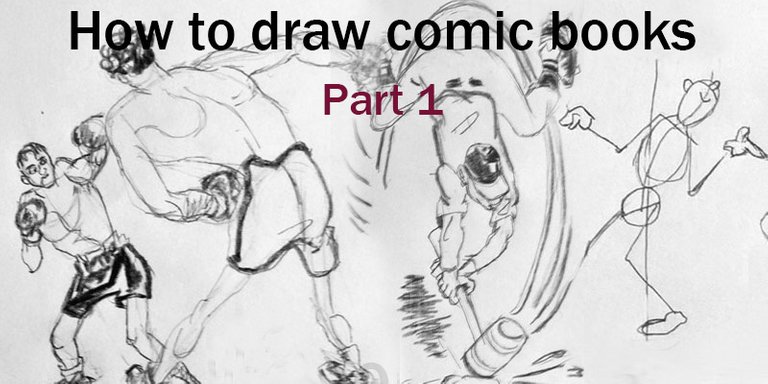
My past tutorials have always been focused on one book but with a subject as broad as comic books, I wanted to take a different approach. This time, we'll be learning from several sources, and for the first class, we'll go back to the past.
In 1956, there was a collection of lessons that covered the entire spectrum of visual arts back in the day, it was called 'Famous Artist Course'. Made by a large number of artists, these 24 lessons represented a deep dive into art.
I selected lesson 8 as our main focus for this series (on the next part we'll move on to another book), and even if it feels like the art style is a bit outdated, I truly believe there's a lot of tricks to learn from these artists.
Let's start...
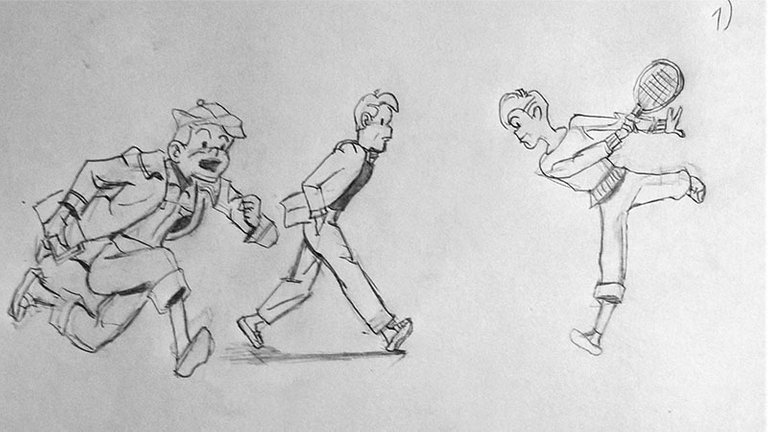
In a comic book, when developing an action or vigorous movement, it's important to tell the story trying to make the figures feel like they're truly moving. Exaggerate attitudes, their poses, stretch the possibilities of anatomy if it's necessary, but make them move.
The action is key for a good comic. The way in which a character sits on a chair is an action, it doesn't matter that if it's not moving. The action no necessarily represents violence or aggression.
It's important to keep the action close to what the human figure is really capable of.
Balance
Balance is fundamental to actions. The balance doesn't play a role only when a figure is in a free fall. A figure is more convincing when it has the appearance of being in balance. A body can only lean back so much before falling into its back unless it's Neo from Matrix. But if that figure was holding to a rope firmly attached or another object of greater weight than it, then the figure could lean all the way and still be in balance. It's important to consider the opposing forces that intervene when drawing an action.
Drawing a vertical line can help to verify if the figure is in balance.
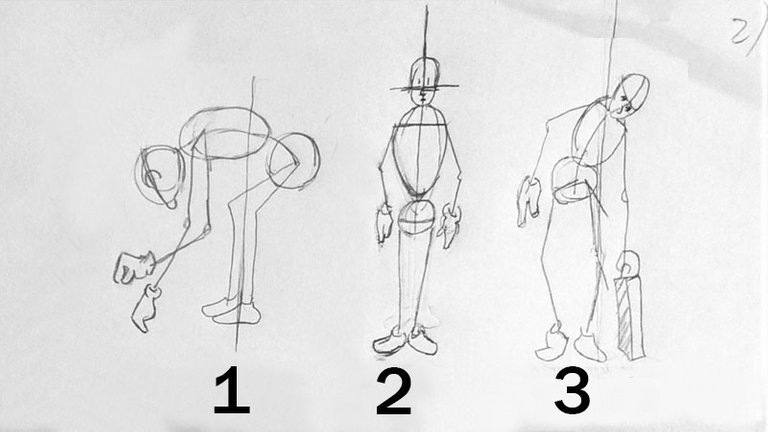
(1) The weight is distributed on both feet, the point of support is in between the feet.
(2) When standing straight the weight is equal on both sides of the line.
(3) Bending to a side means the opposite arm needs to be extended to keep balance.
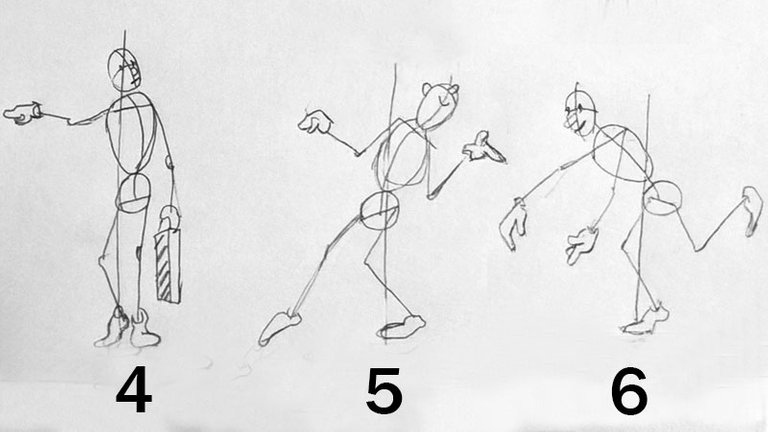
(4) The weight of the briefcase must be offset by the arm and leg.
(5) and (6) Usually, the body's weight is balanced on the feet, when only a foot is on the ground that's the one that holds the weight.

(7) The woman swinging the pipe is in balance, her feet are solidly planted under her and she has control of her body and the situation.
(8) The old man is trying to balance holding heavy things. The lady keeps a pose in balance lifting her bag.
Comic balance in action
When a figure is moving, its balance is determined by gravity, points of support, pressures, and other evident factors.

(9) The kids dancing are in balance because their bodies are in control, the girl leans on the boy to keep balance.
(10) The hockey player balances in his foot and moves forward.
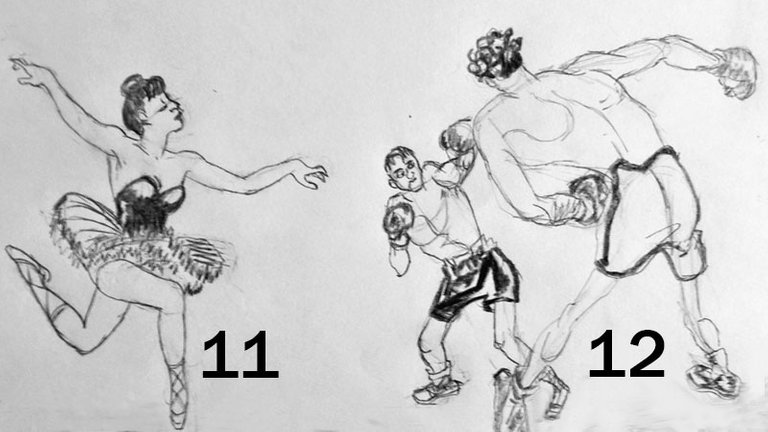
(11) The ballet dancer is in balance stretching her body in the air because she has control over it and has her toe ready to land.
(12) The boxer who's hitting is firmly in control while the one getting beaten is barely holding on one foot his weight.
Speed or Action Lines
The figures in a comic don't move, but we can give the illusion of movement with lines of action.
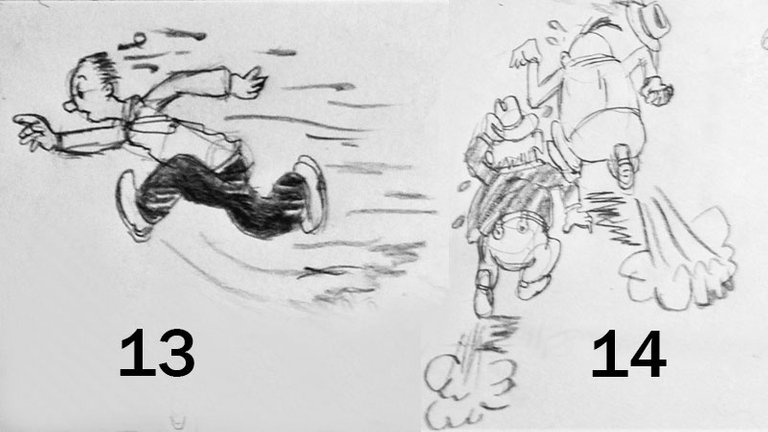
(13) Beside the speed lines in black, there are white lines over his black trouser.
(14) These characters are going away, it's important to practice the action considering all different angles.
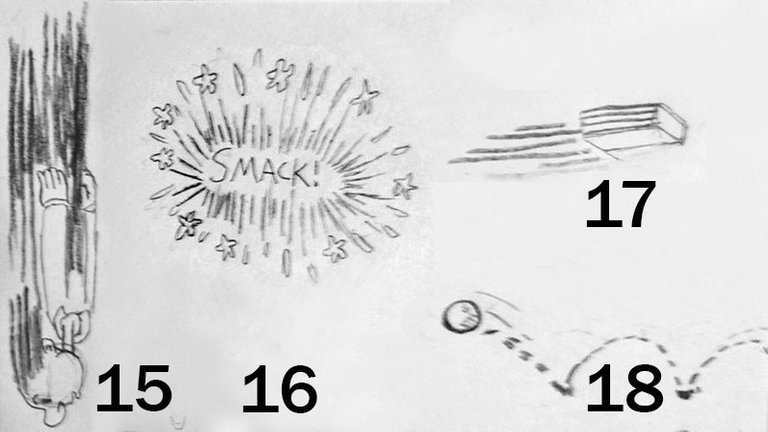
(15) This young man is going down fast. Or it could also be going up or to the side if you just turn the drawing.
(16) Radiant lines come out the point of action, with stars and sweat included.
(17) On bricks or other kinds of objects, it helps that the shading lines go in the same direction as action lines.
(18) The bounce of the ball.
Sock and Smack
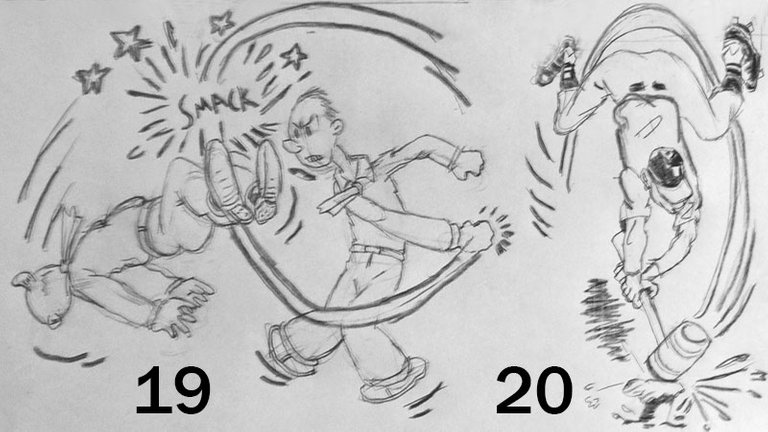
The difference between these figures is that even they're both hitting something, the one trying to nail something down with the maul is at the end of the action, while the man punching the jaw of his opponent, keeps moving and the arm returns close to his body.
(19) The man who got hit is in free fall and clearly without balance. The marks of shine on the fist are used to highlight what did the damage.
(20) Both arcs of action (19 and 20) start where the action produced and follow the line the weapon (or fist) followed. Where the lines fly out is the point of contact.
In the next class, we'll see in detail fighting scenes, analyzing specifically superhero comics.
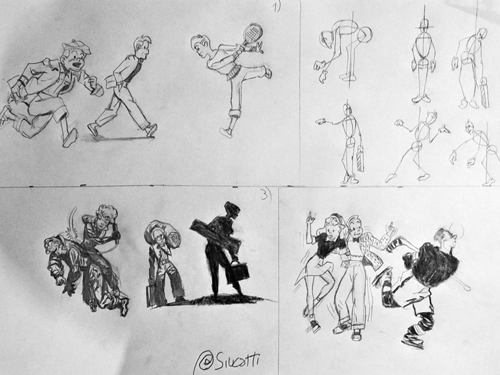
I hope you liked it!
#posh Shared on Twitter
Esta súper interesante tu post. Me encanta. No siempre es fácil seguir las líneas de acción para hacer que los personajes no se vean tiesos.
Sí,es todo un tema. Me parece que está serie de tutoriales puede serle útil a mucha gente así que me voy a esforzar en que queden bien jajaja
Gracias por pasarte!
Very cool. Will wait for more :)
Thank you @longer, I'm glad you liked it. I usually take some time to make them but I'm sure it'll be soon enough.